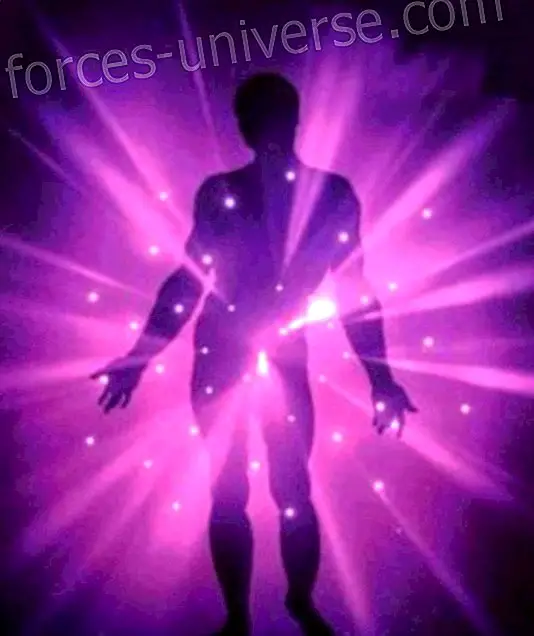Danilo Hernández (Swami Digambarananda) explains in this article why our mental stability is usually interminent and superficial, and how to ensure that balance becomes our habitual nature thanks to the conscious living of every moment of existence.

It is possible that while you start this reading you are comfortably seated enjoying a state of certain tranquility. But perhaps it is a very fragile tranquility ... Imagine that right now I was telling you bad news or a violent and unpleasant event. In this case, it is likely that your peace of mind will disappear immediately and you will begin to feel uncomfortable and tense. This would indicate that your mental stability is rather superficial and that it is at the mercy of any event that occurs. Why does this happen?
It happens because there is not enough alertness and the mind identifies with the event, causing an emotional response of discomfort and tension. And this usually happens very often, regardless of whether we practice Hatha Yoga, meditation, or any other technique.
All the practices that we usually do are very beneficial and help us to channel our lives in a harmonious and positive way. Yoga postures, pranayama, relaxation, meditation, kirtan, Karma Yoga, etc., bring us health and balance. But this equilibrium often has a short duration and can be altered at the first exchange rate. In order for equilibrium to become our habitual nature and cease to be an intermittent state that depends on events, it is necessary that our practice ceases to be a simple practice and becomes a lifestyle. This implies a deep development of attention at all times of our existence. A consciously living from moment to moment.
The human being is asleep
The schools of self-knowledge and the development of human potential consider that the common man is asleep. He suffers from a chaotic and aimless mental activity. He is usually lost in long wanderings, consumed by an internal dialogue that is often obsessive and makes no sense. He lives immersed in stories of mechanical thoughts, in a state of almost continuous distraction that is also usually the first cause of all kinds of accidents. In fact, he becomes aware of how distracted he lives only when he is about to suffer an accident that can cost him dearly.
This state of absence of attention, in which the inertia of involuntary and non-directed thoughts prevails, has enormous and devastating consequences. On the one hand there is the forgetfulness of itself. The individual does not realize that he exists while living, thinking or acting. He has lost the connection with his center, with his essence, with his Being. On the other hand, the impact of negative thoughts passes a great bill to his physical and mental health.
The root of the "disease" is in the mind
Buda and Patanjali agree in the diagnosis of the "disease" of the human being. The problem is not in the body, although this is the container where the ailments and their symptoms usually manifest; The root of the problem is in the mind. Specifically, in the reactive mental patterns of "attachment-aversion" (raga-dwesha) and in the uncontrolled fluctuations of thoughts that generate tremendous mental chaos.
Medical and scientific research have verified what in the science of Yoga has been known for millennia. The most fearsome enemy for the organism are not microbes, bacteria, or viruses, but patterns of mental reaction and negative thoughts.
Thought is a natural and essential function in the life of the human being. The ability to think is an invaluable asset that differentiates us from other species and has allowed us to evolve and transform the world. It is obvious that we need to think, especially when it helps us to interact in life, interact with the present or make forecasts for the future. But there are many occasions when thought becomes a mechanical and turbulent inertia that disconnects us from reality and predisposes us to states of anxiety, worry, fear and all kinds of negative emotions. Consequently it unbalances us and precipitates us towards suffering.
The brain is the computer that directs the body as a whole. It works incessantly throughout our lives regulating each of the functions of metabolism and its chemical balance. Science has discovered that every time we have a thought the brain produces substances called neuropeptides and what we feel and experience is the production and assimilation of these substances.
The cells of the immune system that are responsible for defending the body from bacteria, viruses, germs and ultimately from any disease, have a specific point of charge that receives the neuropeptides. In this way the immune system perceives our thoughts and reacts to our internal dialogue.
The response of the immune system to the pathogenic elements may be weakened or even cease to function due to these substances. It is clear that what we think has consequences and that the response of the immune system is conditioned by thoughts. Positive thinking enhances the functioning of the immune system and negative thinking weakens it. Now we can understand that the root of many ailments, imbalances and diseases is in a way of thinking that alters and hinders the work of the immune system.
From this perspective, it could give the impression that thought is the bad thing about the movie. Absolutely. Actually, the problem itself is not the thoughts but the relationship we establish with them, the identification and subsequent reaction. A neurotic relationship in which the thinker is hunted by thought, identifies with him and is dragged away, forgetting that his true identity is independent and different from the ephemeral flow of those thoughts.
Witness Consciousness, axis of Meditation and Transformation
The best way to free ourselves from the negative effect that involuntary or spontaneous thoughts have on our physical and mental health and internal dialogue is what in Yoga is defined as the development of the Witness Consciousness . An attitude of acceptance and impartial observation before our emotions, thoughts and feelings. Such an attitude allows us to be aware that we are not those passing events and the independence that exists between our deep Self or Self and what happens on our periphery. In this way they do not affect or contaminate internal or external events. We preserve freedom and spontaneity. We stop reacting mechanically and our response to all life situations becomes full conscious action.
Among all the resources we have to enhance and update the Witness Consciousness, the meditation method of the "Inner Silence" (Antar Mouna) that our master Swami Satyananda has bequeathed us stands out . With your help we can train attention and remain as a witness - not implied - of the spontaneous activity of our mind. When we sit down to meditate we are in a privileged situation to develop the Witness Consciousness and deactivate the conditioning of the mind. However, we must not forget that when the sitting ends, the meditative attitude must continue. We must continue to be established in the Witness Consciousness in the midst of everyday situations. This is how the meditative practice ceases to be a simple practice and becomes a lifestyle. This is how meditation expresses itself in action and fruits sadhana (personal practice).
All the practices we do, the therapies we apply, the seminars in which we participate, the texts we study, the teachers we frequent are very good. All this is a great help and gives us health, balance, growth and awakening to the deep dimension of existence. But in many cases he is left alone in sparkles of awakening . As soon as the alert goes down and this is a long-established old habit, the mechanicity, the patterns of conditioned behavior and the avalanche of thoughts with which we identify ourselves and to which we react unconsciously return.
In a sense, it doesn't matter where we live, it doesn't matter what we do, the therapies we perform, the techniques we practice. All this is very good, but As long as we do not have the firm determination to be aware at all times of our internal dialogue, our involuntary thinking, we will remain in sleep. Internal dialogue usually accompanies us throughout the day and is more constant in our lives than any attitude, practice or method we perform.
The awakening and the deep transformation only happen when we update the Witness Consciousness and we disidentify ourselves and we deshinotizar of the mechanical internal dialogue. Carrying out this awakening is not just a matter of practicing techniques but of cultivating an attitude of alertness that permeates our entire lives. The techniques will help us a lot, they will help us to go little by little, to finally establish ourselves in the attitude of being aware at all times.
Meditation in everyday life
But while in the day to day we are not aware of the internal dialogue, the waves of the mental ocean will continue to stir us up, dragging us and generating poisons that intoxicate the whole of our body-mind. Only by becoming aware of the internal dialogue can we free ourselves from it. Then we stop being shaken by its waves and we can navigate in the right direction. This is a process that begins with attention or self-observation, matures with meditation and leads us towards self-realization.
Witness Consciousness is a "white glove" process. It does not require acting nor is it a job. Do not suppress or feed anything. It is a non-doing, not intervening, not getting involved. It is a pure observation from the acceptance that frees us from mental conditioning and allows us to see things as they are and understand the deep nature of all phenomena. The Witness Consciousness synthesizes the essential factors that characterize the sadhana of Classical Yoga or Yoga of Patanjali: "constant practice" (Abhyasa) and "non-attachment, disidentification" (Vairagya).
Every moment and situation of everyday life is an invitation to live consciously, to develop Witness Consciousness. We can observe the body while we walk, we can observe our breathing while we are on the bus, we can be aware of our thoughts while we talk, work, at all times ... What are we waiting for? ... It is a matter of determination, remembering and persevering ...
Ahead !
Swami Digambarananda (Danilo Hernández). Recognized as a Yoga Teacher (Yogacharya) in 1993 by the International Yoga Fellowship Movement and the Bihar School of Yoga in Munger, India. Founder of "Bindu" Chamartín Yoga School in Madrid, 2.002. Author of the book Keys of Yoga. Theory and Practice, editorial The March Hare, where Yoga teachings are synthesized and ordered with a clear and narrative style. He regularly runs yoga courses in other Spanish cities and in South America.
Witness awareness, axis of meditation and transformation






